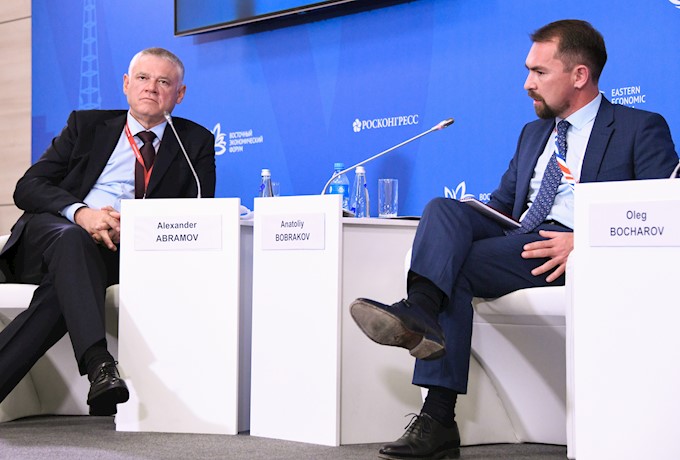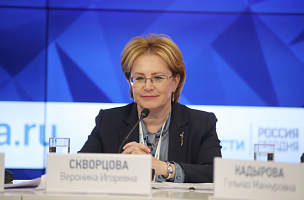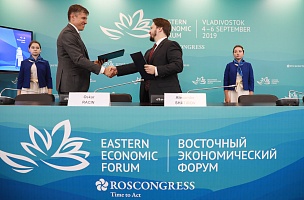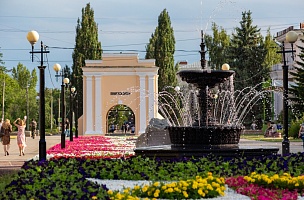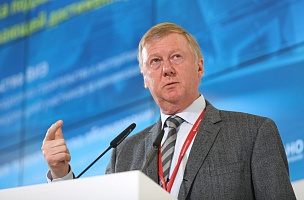KEY CONCLUSIONS
The ban on the export of low-grade timber has had a mixed effect on the development of forestry companies
“The volume of logging has decreased over the past three years. At the same time, the volume of processed sawn timber has increased by 7.5%, which in a certain way has had a both positive and negative impact on the situation,” Deputy Minister for the Development of the Russian Far East and Arctic Anatoly Bobrakov said.
“Indeed, over three years we completed a kind of first stage, when timber was handed over in exchange for investment, and now it is already possible to calculate economically what this led to [...] I think in the East this led to a sharp imbalance because not all the forest has been leased [...] while the forest that has been leased is also not all being used, and it’s clear that, having secured the annual allowable cutting rate, entrepreneurs are forced to choose parts and build roads in parts. These are always short-term solutions based on under market volatility,” Russian Deputy Minister of Industry and Trade Oleg Bocharov said.
“It would be impossible to say unequivocally that the expectations about the threat of a ban on the export of round timber has not affected the current investment processes. Everyone knows how to count money, and everyone adapts,” Russian Deputy Minister of Industry and Trade Oleg Bocharov said.
“We aren’t seeing a reduction in the labour force or a massive layoff. I wouldn’t make a tragedy out of this,” Russian Deputy Minister of Industry and Trade Oleg Bocharov said.
Low-grade timber needs to be exported until a sufficient number of processing plants are built
“In the absence of infrastructure and processing capacity, the ban on exports [of low-grade timber] is having a, shall we say, drastic impact on the economy [...] Of course, the absence of a sorter in the Far East [...] is imposing specific features on the region. We can’t send this wood anywhere except for export,” RFP Group CEO Konstantin Lashkevich said.
PROBLEMS
A lack of infrastructure is hindering the industrial development of logging areas
“What challenge are we seeing in this regard? We understand that today the annual allowable cutting rate [...] is not accessible for industrial development. A lack of infrastructure, forest roads in particular, prevents entrepreneurs and loggers from developing the wood that could be harvested. As the Ministry of Development, we are particularly interested in the resource that exists in the Far East today [...] being used as much as possible in economic growth,” Deputy Minister for the Development of the Russian Far East and Arctic Anatoly Bobrakov said.
“We need certain conditions. What does that mean for our company? It’s either the existence of an annual allowable cutting rate [...]. We are ready to build forest roads ourselves [...] What do we need from the state [...] if we are going to develop the production of pellets, biofuel, and anything else in the Far East. We need shipping terminals. If we don’t have them, then there will be no logical conclusion to production,” Segezha Group Managing Director Nikolay Ivanov said.
Not every business can independently ensure infrastructure due to high costs. Partners and investors are needed
“Given the high costs of building [forest roads], we understand that timbermen won’t be able to do this on their own. They will not be able to put these costs on their business plan,” Deputy Minister for the Development of the Russian Far East and Arctic Anatoly Bobrakov said.
“We only see the successful projects in the Far East as the ones that have partners [...] Where are the companies now that went into investment projects without investors?” RFP Group CEO Konstantin Lashkevich said.
The absence of centres to process low-grade wood requires attracting partners to the business since there is not enough government support
“There are three vectors that need to be urgently addressed. The first is for timber processing companies to nevertheless find a solution and enable this low-grade wood to be exported for a period of 3–5 years because we have to produce it [...] The second is to make a favourable decision so that we can attract serious foreign partners to our business because serious investment resources are needed [...] Also, appealing to the Ministry of Industry and Trade, I would very much like the Industrial Development Fund to have a chance to help develop centres for the processing of low-grade wood so that programmes are instituted not for five hundred million, not for two billion, but for around ten billion roubles because this would create a solution,” RFP Group CEO Konstantin Lashkevich said.
SOLUTIONS
Get investors and the state involved in building the infrastructure needed for the timber industry
“Today, we are working on creating a mechanism via which we could introduce into commerce a resource that is not available to loggers today. To enable investors to build forest roads [...] we are working out a mechanism via which the state would reimburse the cost of forest roads, while increasing the forest lease rate within the term of the lease agreement with the consent of such an investor,” Deputy Minister for the Development of the Russian Far East and Arctic Anatoly Bobrakov said.
“Indeed, this is where the state’s role should be [...] Let’s understand to what extent business cannot provide investments, and the state should support it. Obviously, this includes warehouses and transhipment assembly points,” Russian Deputy Minister of Industry and Trade Oleg Bocharov said.
“As for our support measures, you all know that we are actively developing the Industrial Development Fund. I think that this is the most honest and fair instrument to access medium and long-term financial resources at reduced rates,” Russian Deputy Minister of Industry and Trade Oleg Bocharov said.
For more, see the Roscongress Foundation’s Information and Analytical System roscongress.org


